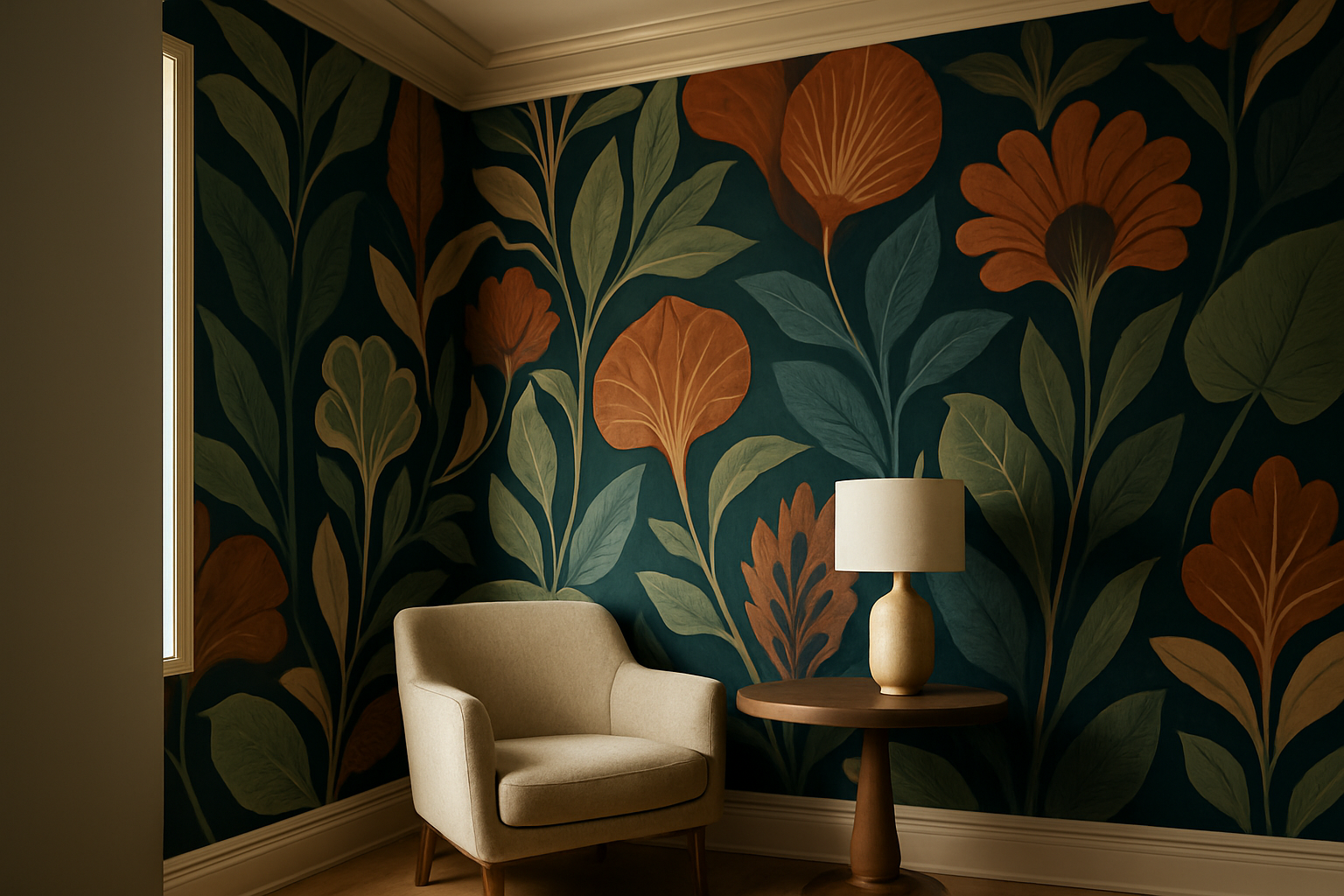Biomorphic Wallpaper: Nature-Inspired Patterns for Dynamic Interiors
In the ever-evolving world of interior design, a captivating trend is taking root, transforming walls into living canvases that pulse with organic energy. Biomorphic wallpaper, with its fluid forms and nature-inspired motifs, is revolutionizing how we perceive and interact with our living spaces. This innovative approach to wall decor blends the boundaries between indoors and outdoors, creating environments that feel both serene and invigorating. Let's delve into the world of biomorphic wallpaper and discover how it's reshaping the aesthetic landscape of modern homes.

In the realm of architecture and interior design, biomorphic elements gained traction in the mid-20th century. Designers began to recognize the psychological benefits of incorporating nature-inspired forms into built environments. This shift marked a departure from the rigid, geometric patterns that had dominated previous decades, ushering in a more fluid and organic aesthetic.
The Rise of Biomorphic Wallpaper
As the principles of biomorphic design found their way into various aspects of interiors, wallpaper emerged as a perfect canvas for these nature-inspired patterns. The advent of digital printing technologies in the late 20th and early 21st centuries opened up new possibilities for wallpaper design, allowing for intricate, large-scale patterns that were previously impossible to produce.
Biomorphic wallpaper began to gain significant popularity in the 2010s, coinciding with a growing interest in wellness and biophilic design. Homeowners and designers alike were drawn to these patterns for their ability to create calming, nurturing spaces that felt connected to nature, even in urban environments.
Characteristics of Biomorphic Wallpaper
Biomorphic wallpaper is characterized by its organic, free-flowing forms that mimic shapes found in nature. Common motifs include:
-
Cellular structures and molecular patterns
-
Representations of plant life, such as leaves, petals, and vines
-
Abstract interpretations of water ripples or rock formations
-
Soft, curved lines that evoke the contours of living organisms
Colors in biomorphic wallpaper often draw from nature’s palette, featuring earthy tones, vibrant greens, and soothing blues. However, designers also experiment with bold, unexpected color combinations to create striking visual impacts.
The Psychological Impact of Biomorphic Patterns
The appeal of biomorphic wallpaper goes beyond mere aesthetics. Research in environmental psychology suggests that exposure to nature-inspired patterns can have positive effects on mental well-being. These designs are thought to reduce stress, improve cognitive function, and enhance overall mood.
The fluid, organic forms of biomorphic wallpaper create a sense of movement and life within a space. This dynamism can make rooms feel larger and more open, counteracting the claustrophobic effect that some traditional wallpaper patterns might induce.
Integrating Biomorphic Wallpaper into Home Design
Incorporating biomorphic wallpaper into your home requires thoughtful consideration of scale, color, and overall design scheme. Here are some approaches to effectively use this trend:
Statement Walls
One popular application is to create a focal point by applying biomorphic wallpaper to a single wall. This technique works particularly well in bedrooms, living rooms, or dining areas, where the pattern can serve as a captivating backdrop.
Ceiling Applications
For a truly immersive experience, consider applying biomorphic patterns to the ceiling. This unexpected use of wallpaper can transform a room into a mesmerizing sanctuary, evoking the feeling of being enveloped by nature.
Small Spaces with Big Impact
Powder rooms and entryways are excellent candidates for biomorphic wallpaper. In these smaller spaces, bold patterns can create a memorable impression without overwhelming the overall home design.
Complementary Furnishings
When using biomorphic wallpaper, it’s important to choose furnishings and decor that complement rather than compete with the pattern. Solid colors and simple forms often work best, allowing the wallpaper to take center stage.
The Future of Biomorphic Wallpaper
As technology continues to advance, we can expect to see even more innovative applications of biomorphic design in wallpaper. Some emerging trends include:
-
Interactive wallpapers that respond to touch or environmental changes
-
Integration of sustainable materials and eco-friendly production methods
-
Customizable designs that allow homeowners to create bespoke biomorphic patterns
The fusion of digital technology with biomorphic principles opens up exciting possibilities for creating truly adaptive living spaces that respond to our needs and enhance our connection to the natural world.
Conclusion
Biomorphic wallpaper represents a fascinating intersection of art, nature, and psychology in interior design. By bringing the organic forms of the natural world into our homes, we create spaces that are not only visually striking but also conducive to well-being and relaxation. As we continue to seek ways to reconnect with nature in our increasingly urbanized lives, biomorphic wallpaper offers a compelling solution – transforming our walls into windows to the natural world, right in the heart of our homes.





